KicksWrap: Understanding the Causes and Prevention of Sneaker Hydrolysis
Learn about sneaker hydrolysis, its causes, prevention tips, and repair options.
We all want to keep our favorite sneakers looking as good as possible for as long as possible. However, most sneakers available today inevitably suffer from deterioration due to hydrolysis.
• The sole crumbles when touched
• The sole peels off completely
• The lining becomes sticky
The above are well-known symptoms of sneaker deterioration caused by hydrolysis. For sneakers, which are meant to be worn, such damage can significantly compromise their performance and longevity.
So why does this type of deterioration occur?
In this article, we will explain the mechanism and causes of sneaker hydrolysis.
Examples of Sneaker Hydrolysis
For sneaker enthusiasts, you may have already encountered hydrolysis with the sneakers you own. However, for those who have recently become interested in sneakers, it might be hard to fully grasp the characteristics just by reading about them.
So first, we will show you two actual examples of sneakers that have undergone hydrolysis.

First, let’s look at a representative example of hydrolysis: the Nike Air Max 95.
The silhouette still somewhat retains its sneaker shape, but the hydrolysis in the midsole is severe, making it impossible to wear as it is falling apart.

Next, we have the Nike Air Jordan 4, which is also famous for being prone to hydrolysis.
In this case, the midsole has completely collapsed due to hydrolysis, resulting in a state where it no longer resembles a sneaker.
The two types of sneakers mentioned as examples have both undergone complete hydrolysis, representing the final stage of hydrolyzed sneakers. However, once the symptoms of hydrolysis begin to appear, it’s only a matter of time before they reach a state like the one shown in the photos.
Now that you’ve seen the actual examples, let’s discuss why this happens, including the mechanisms and causes of hydrolysis.
Mechanism and Causes of the Classic Sneaker Deterioration

Unfortunately, hydrolysis is a type of deterioration that cannot be prevented. To put it another way, hydrolysis begins long before the sneakers reach your hands; it starts at the manufacturing stage.
You might think, “Really, that early?” but the answer lies in the mechanism of hydrolysis.
Mechanism of Hydrolysis
Sneaker soles often use a sponge-like material called polyurethane foam for weight reduction and cushioning. Although not visible to the naked eye, this sponge structure contains many small holes.
Moisture can enter these tiny holes, leading to the breakdown of the bonds between the molecules that form the polyurethane. This phenomenon is known as hydrolysis.
In other words, things that were originally bonded together get pulled apart by foreign substances that have entered, causing them to lose their shape.
When applied to sneakers, this means that the bonds of the polyurethane that form the sole break down, resulting in the sole crumbling apart.
Additionally, hydrolysis is not limited to the sole; it can also affect the adhesives used to bond the materials of the shoe, leading to stickiness and separation between materials.
Causes of Hydrolysis
The breakdown of molecular bonds is caused by moisture. In other words, the cause of hydrolysis is moisture.
The moisture that affects sneakers comes from:
1. Humidity in the air
2. Human sweat
3. Direct exposure to rain, etc.
As you can see, the causes are quite close to us when we think about it for just a moment.
The earlier statement that “hydrolysis begins at the manufacturing stage” is also true because the polyurethane material used for sneakers is exposed to humidity in the air from the moment it is formed.
Sneakers Prone to Hydrolysis and Those That Are Not

Most sneakers available today are models that will undergo hydrolysis. However, some models are made with materials that prevent hydrolysis.
In this section, we will introduce representative examples of sneakers that are prone to hydrolysis and those that are not.
Sneakers Prone to Hydrolysis
1. Nike Air Max
2. Nike Air Jordan (models from 2 onward)
3. Nike Air More Uptempo
All of these sneakers use polyurethane in their soles, making them susceptible to deterioration from hydrolysis. As shown in the earlier photos, the hydrolysis of the Air Max 95 is quite known, so many people may already be aware of it.
In this instance, we have introduced three models from Nike that are prone to hydrolysis, but there are certainly many models from other brands like New Balance, adidas, and Reebok that are also subject to hydrolysis.
The so-called “high-tech sneakers” often use polyurethane in their soles, making them more susceptible to hydrolysis.
Sneakers That Do Not Undergo Hydrolysis
1. Converse All Star, Chuck Taylor 70
2. Vans Old Skool
3. adidas Stan Smith, Super Star
All three of these have rubber soles, so they do not experience deterioration from hydrolysis. Particularly, the Chuck 70s and Old Skool are mostly made with a combination of canvas fabric and rubber soles, making them highly durable.
However, rubber soles may gradually harden over time due to the properties of rubber, which could lead to decreased cushioning. While not all rubber soles will inevitably harden, it’s something to keep in mind.
Three Measures to Prevent Hydrolysis in Sneakers

As mentioned at the beginning, hydrolysis is a type of deterioration that cannot be prevented. However, by taking appropriate measures, you can significantly slow down the progression of hydrolysis. The measures are:
1. Humidity Control
2. Regular Wear
3. Correct Storage Methods and Location Selection
These three are methods to prevent hydrolysis. Let’s explain each in detail.
Humidity Control
The most reliable and low-effort method is to place silica gels inside the sneakers. Using a dehumidifier is also acceptable. However, considering the initial cost and daily electricity expenses, managing humidity with a dehumidifier can be quite challenging.
In contrast, drying agents are cost-effective and require minimal effort, making them perfect for controlling moisture in sneakers. Whether you wear them on rainy days or sweat from your feet, moisture accumulates inside the sneakers, so be sure to include drying agents like silica gel to effectively remove moisture.
Especially in Japan, where the environment is hot and humid, silica gel is an essential item when storing sneakers indoors.
• Regular Wear
There are various opinions, but it is often said that wearing sneakers regularly is the best preventive measure against hydrolysis. By wearing sneakers, a moderate pressure is applied to the sole, pushing out moisture that has seeped into the gaps of the polyurethane.
Rare sneakers can make you hesitant to wear them due to the fear of damage. However, wearing them regularly can actually extend their lifespan, so unless it’s a model you want to keep unworn in your collection, it’s advisable to wear them consciously.
• Correct Storage Methods and Location Selection
For regularly worn models: Use drying agents or drying agents plus sneaker boxes
For models kept unworn in a collection: Use drying agents, wrapping film and sneaker boxes
It is recommended to change the storage method based on the frequency of wear, as shown in the combinations above. Storing sneakers in a high-humidity area without any humidity control will undoubtedly shorten their lifespan.
Especially for rare models that are kept unworn in a collection, it is essential to implement more reliable moisture control to maintain their value.
Additionally, KicksWrap’s wrapping film has a single air hole at the toe, which means it can protect sneakers from humidity in the air effectively. The premium models also have UV-cut features, making them perfect items for sneaker preservation.
Frequently Asked Questions

Here are some common questions regarding hydrolysis in sneakers:
• Repairability
• How many years does it take for sneakers to undergo hydrolysis?
Is it possible to repair sneakers that have undergone hydrolysis?
A: It can be both yes and no.
Repairing sneakers that have been damaged by hydrolysis is not possible on their own. Unfortunately, there is no method to revert deteriorated polyurethane back to its pre-hydrolysis state.
However, there is a method known as “sole swap”, where you can transplant a different sole onto sneakers that have been damaged by hydrolysis. That said, returning them to exactly the same condition as before hydrolysis is quite a high hurdle to overcome.
There are two reasons for this:
- You need to prepare a sole of the exact same model and size.
- The sole used as a replacement must not be deteriorated.
To return the sneakers to their pre-hydrolysis state, you would need to obtain another pair of the same sneakers, which can be a significant financial burden. Furthermore, since the sole used for replacement must not have undergone hydrolysis, finding one for older models can be challenging.
Considering these factors, it can be said that while repairing sneakers that have undergone hydrolysis is technically possible, it is almost impossible in practical terms.
How many years does it take for sneakers to undergo hydrolysis?
A: It is often said to be around 10 years. However…
The 10-year lifespan refers to sneakers in drier climates, like that of the United States. In humid environments, like Japan, it is said to be around 5 to 7 years.
Of course, this varies depending on storage methods, frequency of wear, and the model, so it cannot be definitively stated as a specific number of years. There are cases where sneakers might not last even 5 years, while others might last up to 8 years with no special care.
Summary
Many current sneakers, including rare premium models, utilize polyurethane soles. Hydrolysis begins at the manufacturing stage, making it a type of deterioration that cannot be completely prevented.
However, with proper storage methods, you can definitely extend their lifespan compared to not taking any precautions. Simply placing drying agents inside can make a significant difference, so it is recommended to implement hydrolysis prevention measures that suit your style.
Follow us on:
More SNKRDUNK Features:
KicksWrap: A Guide to Proper Sneaker Storage
KicksWrap: Sneaker Care Tips for Your White Air Force 1s
KicksWrap: 3 Essential Sneaker Care Hacks
KicksWrap: How to Find the Best Insole for Your Shoes
KicksWrap: How to Clean White Sneakers
KicksWrap: What Not to Do With Your Favorite Sneakers










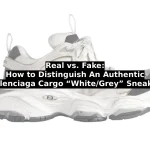
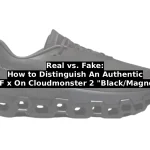
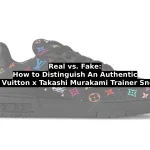


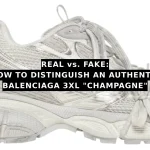
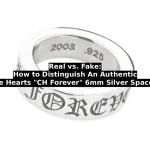
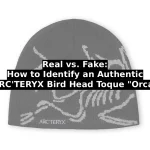




![Dr. Martens “Year of the Horse” collection [Release Date/Price/Where To Buy]](https://snkrdunk.s3.ap-northeast-1.amazonaws.com/en/magazine/wp-content/uploads/2025/12/26124817/20251226021918-0.jpg)




